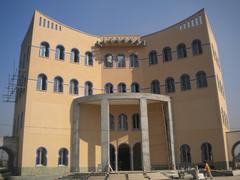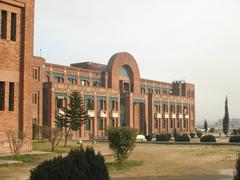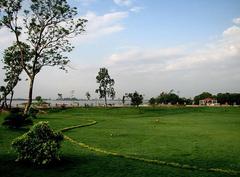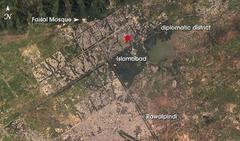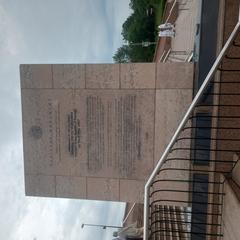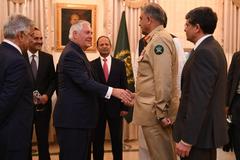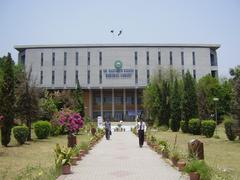Margalla Hills National Park Visiting Hours, Tickets, and Comprehensive Travel Guide: Islamabad’s Historical and Natural Landmark
Date: 15/06/2025
Introduction
Margalla Hills National Park, positioned at the northern edge of Islamabad, is one of Pakistan’s most celebrated natural sanctuaries. Spanning around 173 square kilometers, the park is not only a haven for biodiversity but also a living record of geological and cultural history. From ancient Miocene-era limestone formations to archaeological treasures and vibrant local traditions, Margalla Hills is a microcosm of Pakistan’s ecological and cultural wealth. This guide provides a detailed overview of the park’s historical significance, natural wonders, practical visitor information, safety recommendations, and tips for responsible tourism—equipping travelers for a safe and meaningful experience.
(Wikipedia, National Parks Association)
Historical and Cultural Significance
Geological Heritage
Margalla Hills’ rugged limestone terrain dates back millions of years to the Miocene epoch, offering a rare window into the region’s geological evolution. The park’s dramatic cliffs, deep valleys, and rocky outcrops are the result of ancient tectonic activity, and they continue to shape the landscape and habitats seen today.
(Wikipedia, Zoological Society of Pakistan)
Archaeological and Religious Heritage
The park is rich in archaeological sites, most notably the Shah Allah Ditta Caves. These caves, estimated to be over 2,500 years old, have served as a passage for travelers and historical figures, such as Alexander the Great. Ancient Buddhist murals and Hindu iconography attest to the religious plurality that has characterized the region for millennia. The nearby Saidpur Village is another testament to this cultural harmony, hosting a mosque, a Hindu temple, a church, and a Sikh gurdwara within close proximity.
Historical Corridors and Connectivity
Historically, Margalla Hills have served as a strategic corridor linking the Indian subcontinent with Central Asia. The park’s proximity to Taxila, a UNESCO World Heritage Site and ancient seat of learning, further enhances its historical significance. Many trails in the park follow ancient routes once walked by traders, monks, and armies, weaving the hills into the broader tapestry of South Asian history.
Ecological Features
Geology and Topography
Margalla Hills form the foothills of the Himalayas, with elevations ranging from 500 to over 1,600 meters. The area features a mix of steep slopes, forested valleys, and rocky ridges. The park’s unique geology not only shapes the vistas but also creates diverse microclimates and habitats for flora and fauna.
(National Parks Association, E Lands PK)
Flora
The park is situated in the subtropical pine forest zone, supporting over 600 plant species. Dominant trees include Chir Pine, Olive, Phulai, and Sanatha, alongside a wealth of medicinal and wildflower species. Seasonal changes, particularly in spring, bring an explosion of wildflowers.
(Zoological Society of Pakistan)
Fauna
Margalla Hills National Park is a biodiversity hotspot. Mammals such as the Common Leopard, Golden Jackal, Barking Deer, and Rhesus Macaque roam the valleys and ridges. Birdwatchers can spot over 250 species, including Peregrine Falcons, Asian Paradise Flycatchers, and Crested Honey Buzzards—especially during migration seasons. Reptiles and amphibians are also common, particularly near streams and rocky areas.
(Explore Pakistan With Us, TravelSetu)
Ecosystem Services
The park provides vital ecosystem functions, such as carbon sequestration, climate regulation, soil conservation, and water catchment for Islamabad. Conservation efforts led by the Islamabad Wildlife Management Board (IWMB) focus on habitat preservation, reforestation, and species protection.
(IWMB, National Parks Association)
Conservation and Community Engagement
The establishment of Margalla Hills National Park in 1980, and ongoing efforts by organizations like IWMB and WWF-Pakistan, have transformed the park into a model of eco-tourism and environmental education. Conservation initiatives include:
- Protection of endangered species like the Margalla leopard.
- Restoration and maintenance of historical and religious sites.
- Community-based awareness programs and clean-up drives.
- Fire management and anti-poaching patrols.
Local communities, NGOs, and media play important roles in advocacy and sustainable tourism, though ongoing challenges include urban encroachment, illegal construction, and plastic pollution.
(Pak Observer, Islamabad Scene)
Visiting Margalla Hills National Park
Visiting Hours
- General Hours: Open year-round, 24 hours a day. For safety and optimal experience, visit between 6:00 AM and sunset.
- Best Seasons: Spring (March–May) and autumn (October–November) offer mild weather and vibrant wildlife.
Tickets and Entry Fees
- Entry: Free for all visitors.
- Special Fees: Some activities, guided tours, or parking at major viewpoints (Daman-e-Koh, Pir Sohawa) may require a nominal fee. Carry cash for local amenities.
(IWMB)
How to Get There
- By Car/Taxi: Easily accessible from Islamabad city center; main entry points are well-signposted (Trail 3, Trail 5).
- Public Transport: Buses serve some trailheads; the Margalla Railway Station is a potential access point.
- On Foot: Many trails and viewpoints are interconnected for hikers.
Hiking, Outdoor, and Family Activities
Top Hiking Trails
- Trail 3: Moderate 5.5 km hike from sector F-6 to Pir Sohawa, popular for its steep ascent and panoramic views.
- Trail 5: 5 km route through lush valleys, suitable for families and wildlife observation.
- Other Trails: Trails 1, 4, and 6 offer quieter hiking experiences.
Adventure Activities
- Rock Climbing: Designated cliffs cater to beginners and experts.
- Paragliding and Mountain Biking: Available with local adventure groups.
- Nature Walks and Birdwatching: Early mornings are ideal for observing birds and mammals.
Scenic Viewpoints
- Daman-e-Koh: Panoramic city views, accessible by car, with gardens and food stalls.
- Pir Sohawa: High-elevation viewpoint, home to Monal Restaurant.
Historical Sites
- Shah Allah Ditta Caves: Explore ancient Buddhist murals and resting places of travelers from centuries past.
- Saidpur Village: Experience religious harmony and traditional architecture.
Family and Picnic Spots
- Shaded benches and natural springs like Bruti Waterfall provide family-friendly recreation.
Dining
- Monal Restaurant: At Pir Sohawa, with scenic views.
- Daman-e-Koh Food Stalls: Snacks and local treats.
Safety and Practical Tips
General Safety
- Wildlife: Maintain a safe distance from animals; do not feed wildlife.
- Hiking: Wear sturdy shoes, carry water and sun protection.
- Weather: Avoid trails during extreme heat or rain (monsoon season).
- Fire Risk: No open fires or smoking; wildfires are a significant hazard.
(IWMB, Pak Observer)
Facilities
- Parking and Restrooms: Available at major trailheads and viewpoints.
- Camping: No formal campsites; plan ahead, bring all necessary supplies, and follow Leave No Trace principles.
- Accessibility: Some picnic spots are accessible by wheelchair; most trails have natural, uneven terrain.
Conservation Guidelines and Environmental Challenges
- Support conservation by avoiding littering and respecting park rules.
- Participate in park clean-up events and tree-planting drives if available.
- Report any illegal activities or wildfires to authorities.
(IWMB, National Parks Association)
Recommended Visuals and Media
- High-resolution photographs of wildlife, landscapes, and viewpoints with descriptive alt text.
- Interactive trail maps and virtual tours are available on official park and tourism websites.
Frequently Asked Questions (FAQ)
Q: What are the park’s visiting hours?
A: Open 24/7, but activities are best between sunrise and sunset.
Q: Is there an entry fee?
A: General entry is free; some parking and special activities may have fees.
Q: Are pets allowed?
A: Pets are generally discouraged to protect wildlife.
Q: Is the park accessible for wheelchairs or strollers?
A: Some picnic areas are accessible; most trails are not due to natural terrain.
Q: How do I book a guided tour?
A: Guided tours can be arranged through local operators or via IWMB announcements.
Q: Is camping allowed?
A: Informal camping is possible with self-sufficiency; fires are strictly prohibited.
Conclusion and Final Tips
Margalla Hills National Park stands as a symbol of Pakistan’s natural grandeur and cultural diversity. Its ancient geological formations, vibrant biodiversity, and harmonious religious sites create a multifaceted experience for all visitors. By embracing responsible tourism, adhering to park guidelines, and supporting conservation initiatives, every visitor can help safeguard this remarkable landscape for generations to come.
Explore the scenic trails, experience the serenity of panoramic viewpoints, and immerse yourself in the historical tapestry that makes Margalla Hills National Park a cornerstone of Islamabad’s heritage. Plan your visit using official resources and consider downloading the Audiala app for up-to-date information, trail maps, and expert tips.
Key Resources for Further Information
- Wikipedia – Margalla Hills
- National Parks Association – Margalla Hills National Park
- TravelSetu – Margalla Hills National Park Tourism History
- Explore Pakistan With Us – Biodiversity and Visitor Guide
- Trip101 – Things To Do In Islamabad
- Islamabad Wildlife Management Board (IWMB)
